In order to find out whether drinking water is harmful, and in general whether it is suitable for consumption, they analyze the quality of the water.
You can check the water quality different ways. One of the easiest is to taste it.
The presence of chlorine, rust, iron is quite easily detected by human taste buds. You can also try to defend the water - if after a few hours a whitish precipitate appears in it, it means that too many salts are dissolved in the water.
Of course, the methods described above are subjective and insufficient. The only reliable way to check the quality of water is to analyze it.
The chemical analysis of water from a well is simpler than the analysis of water from a well. Water, located closer to the surface of the earth, more often comes into contact with a variety of pollutants: surfactants (surfactants), pesticides, biological pollutants.
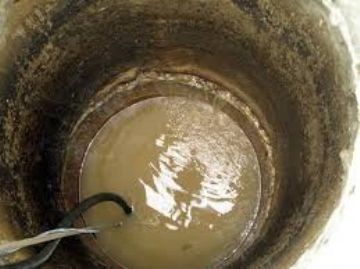 If water from a well is more often analyzed only by the main parameters: iron, bicarbonates, turbidity, manganese, sulfates, alkalinity, chlorides, then water from a well is subjected to a more thorough examination:
If water from a well is more often analyzed only by the main parameters: iron, bicarbonates, turbidity, manganese, sulfates, alkalinity, chlorides, then water from a well is subjected to a more thorough examination:
- Check for Escherichia coli, Giardia and other biological contaminants.
- On inorganic substances - copper, zinc, lead, sodium and mercury.
- Pesticides - endrin, toxafol, aldicarb, lindane, oxamyl, heptachlor, methoxychlor.
- For organics - styrene, carbon tetrachloride, acrylamide, dioxin.
- For radionuclides - alpha and beta particles, radium.
- For herbicides - antacin, endothal, dalapon, dikval, penchlorophenol.
Water from a well up to ten meters deep should be especially carefully checked for microbiological indicators. The problem is that in stagnant water with an excess of oxygen, microflora quickly develops.
An analysis is also required for oil products, surfactants and fertilizers: these pollutants can enter the well with rainwater and domestic sewage. Easily oxidizable pollutants (chlorides, ferrocompounds, sulfides) are quite rare in such wells.
There is much less oxygen in the well and microbiology analysis can be omitted. But the concentration of iron, potassium, manganese and sodium can be increased.
Why is water analysis necessary?
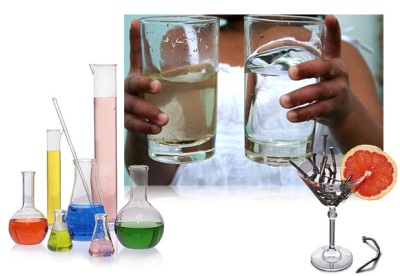 Water is analyzed from a well or well no earlier than after two or three weeks of operation of the water intake source. By this time, the composition of groundwater is restored, the dust and dirt raised during construction settle down.
Water is analyzed from a well or well no earlier than after two or three weeks of operation of the water intake source. By this time, the composition of groundwater is restored, the dust and dirt raised during construction settle down.
Water analysis is carried out in order to:
- Find out the quality of the water.
- Make sure it is fit for drinking, daily domestic use, washing, for use in the operation of household appliances.
- Calculate the parameters of the filtration system.
I would especially like to note the last point. A lot of filters are produced today and to find out which one you need, water is analyzed. In the sanitary characteristics of drinking water, more than one hundred and thirty different pollutants are indicated. Water is especially polluted in Moscow and the Moscow region.
Depending on the type of pollutant identified by the analysis of water from a well or well, a filter is selected. It could be:
- Illuminating filter. It is used if the analysis showed increased turbidity of water, smell, taste, color. The sorbent of clarification filters is coal.
- Filter to remove excess iron in water.
- Water softening filter.
- Biofilter - designed to destroy microbes in the water.
How is research carried out?
 It is very important to collect a sample for analysis correctly. As a container, glass or plastic bottle not less than 1.5 liters in volume.
It is very important to collect a sample for analysis correctly. As a container, glass or plastic bottle not less than 1.5 liters in volume.
Immediately before the set, the water is drained for five to ten minutes. This is done to prevent stagnant water from entering the sample. A rarely used well or water supply needs to be pumped for three hours or more.
The bottle must be thoroughly rinsed. Taking bottles from sweet drinks is not recommended. They collect water in a small stream, letting it go along the wall of the bottle. This method helps to avoid saturation of water with oxygen and eliminate chemical reactions.
Fill the bottle completely, screw the cork as tightly as possible. If it is impossible to send a sample for analysis immediately after sampling, you need to remember that it is stored in the refrigerator for no more than two days.
The sample must be supplied with the following information:
- Place of fence: region, city, district, street, village, village.
- Selection date.
- Type of source: well, well, water supply.
To check the water, they turn to the SES (sanitary and epidemiological service), to the water utility department, to the company supplying filters or to an independent laboratory. Independent expert review is of course preferable. However, you need to find out in advance whether the company is accredited.
There are laboratories equipped with the most modern equipment for accurate and reliable analysis. The term of execution of the order in such institutions is one or two days.
Water analysis is different types: complete, abbreviated or focused on the identification of individual pollutants. To understand what quality the water is, whether it is suitable for drinking and domestic needs, an abbreviated analysis is usually sufficient.
How often should this procedure be performed?
Water analysis for an existing well or well must be done at least once a year. This is due to the fact that the quality of water can decrease almost at any time, say, as a result of the discharge of chemical waste, ingress into a source of sewage.
As a rule, water pollution occurs imperceptibly, and in order to notice changes, it is necessary to monitor it. chemical composition. It should be remembered that the absence of an aftertaste or an unpleasant odor does not mean that the water is drinkable and completely safe.
Testing water quality in the laboratory
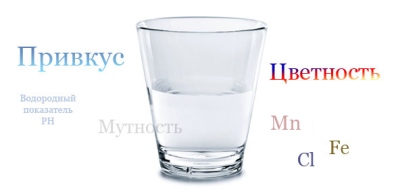 Laboratory workers test water for the following indicators:
Laboratory workers test water for the following indicators:
- Hydrogen level. The normal level of hydrogen (PH) is six to nine. If the level is exceeded, the water smells unpleasant, “lathers”. Special water treatment systems are required.
- General hardness. The content of magnesium and calcium ions in water. Water with excessive hardness is harmful washing machines leaves scale on the dishes.
- Mineralization. Analysis of water for salt content. The normal level of salts for drinking water is grams per liter.
- Alkalinity. Presence of anions, hydroxides and carbonates in water.
- Oxidability. Analysis for the presence of organic matter in water.
- Biochemical oxygen indicators. For drinking water, this indicator should not exceed three milligrams of oxygen per liter of liquid.
- Toxicity.
The cost of analysis in the laboratory
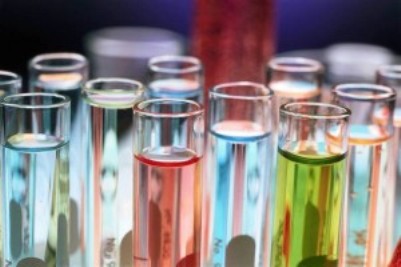 The cost of water analysis depends on many factors: parameters, region, laboratory, etc. Detailed price lists are posted on the websites of specific laboratories and research centers, both public and private.
The cost of water analysis depends on many factors: parameters, region, laboratory, etc. Detailed price lists are posted on the websites of specific laboratories and research centers, both public and private.
On average, the price for analyzing water from a well or well is:
- Analysis of water from an artesian well - 2500 rubles.
- The price of biological analysis is 1500 rubles.
- The price of water analysis from a well and a shallow well is 2500 rubles.
Water is necessary for a person every day and in large quantities. Drinking, washing, washing fruits and vegetables - you can’t do without water. Therefore, it is extremely important that the liquid we use meets all sanitary standards.
At the end of the article, see the video on how the water quality examination takes place.
Water is something no human can live without. But at the same time, it can also become a source of terrible and even fatal diseases. To avoid the risk of poisoning, it is necessary to analyze drinking water and well water in a timely manner. It is recommended to repeat such a check if construction of a road or a house has begun near your house. If you live near places where garbage accumulates, it is worth analyzing the water as often as possible and be sure to install a high-quality purification or filtration system.
Where is the analysis carried out?
The cost of such a service is usually more symbolic, and some laboratories even do it for free. To do this, you will need to take a water sample to where specialists will conduct a detailed analysis of the liquid. You can also contact another organization that provides such services, the cost will be slightly higher, on average, about 950 rubles, but the tests will take much less time.
How to test water in a well?
Water from a well or well is most often saturated with harmful bacteria and not only, therefore, it is necessary to identify everything. You cannot carry out such a procedure on your own. For an accurate result, you will need special equipment that will allow you to perform a chemical analysis of water. 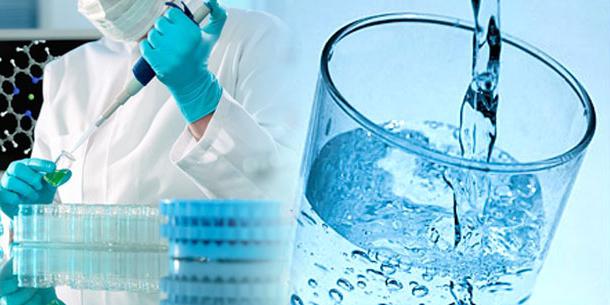
Quite rare on summer cottages There is central water supply, and most gardeners use well water. Of course, the taste of tea with well water cannot be compared with the usual city one, but you should not rely so much on the fact that the unpurified liquid is more useful. It may contain nitrates. Water can be supersaturated with iron, and long-term use of such liquids eventually leads to kidney disease. In addition, many gardeners use fertilizers to increase yields. Harmful chemicals penetrate the earth and impregnate it. In order to be safe, it is necessary to analyze the water from the well.
How to take a sample yourself?
Of course, you can invite a specialist, and he will take a sample himself, but such a trip will cost you an additional several thousand rubles. Therefore, everything can be done independently.
In order for the analysis result to be the most accurate, everything must be done correctly. To do this, use only clean dishes (glass or plastic). A bottle of mineral water is best suited for these purposes, but not from carbonated water (in such containers, chemicals remain on the walls that will affect the entire analysis process). 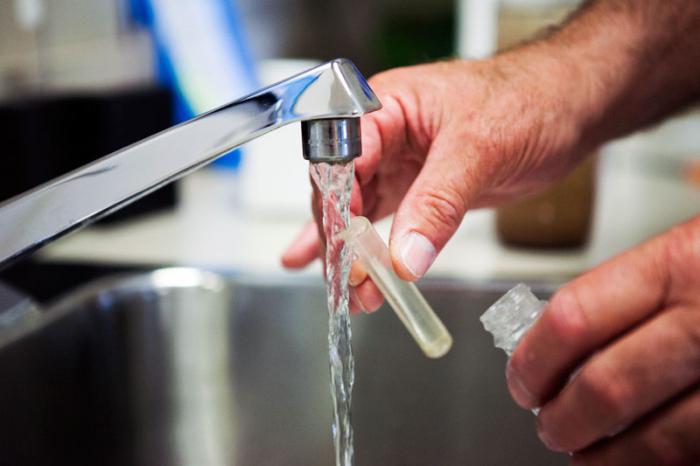
Run water out of the pipe from the pump you are using in the well. Rinse the sample container well with water without any detergents. During sampling, the stream of water should flow slowly so that excess oxygen does not form in the bottle from excessive pressure. Next, you need to tightly close the container and pack it in a dark bag that does not let light through. The analysis of water from the well is carried out no later than three hours after sampling, so it is better to immediately take the container with the liquid to the laboratory. If you do not have such an opportunity, then you can put the bottle in the refrigerator, but not in the freezer. So you extend the life of your sample by a few days.
The cleaner the sample container, the more accurate the information obtained by specialists will be.
What to do with the results?
After receiving the results and consulting with the laboratory staff, you will be able to choose the most suitable system water filtration and purification. Perhaps a simple one will suffice, or you may need to install a more serious system. 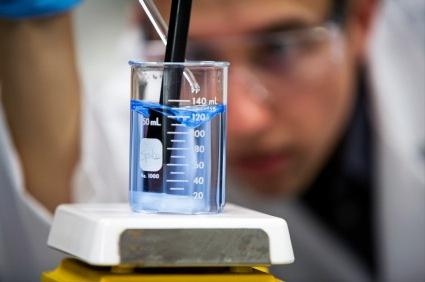
What if there are no similar laboratories nearby?
If you live far from the city and you do not have the opportunity to take a sample for analysis, you can use a temporary solution to the problem. If the water in your well is cloudy, then perhaps the reason for this was an excess of sand or clay, particles of which got into the liquid.
If the water has a metallic taste, it means that it is supersaturated with iron, respectively, it is necessary to lower the level of this substance in the liquid. There are many folk methods for this cleaning.
Attention! If you smell rotten eggs, this is a wake-up call and you need to urgently analyze the water from the well. The reason for the unpleasant odor is the formation of a large dose of hydrogen sulfide. Drinking such water is dangerous to health. Hazardous substances can not only affect the functioning of the liver and kidneys, but even lead to death.
Tap water
Many hope that the city water utility purifies the water, and you can safely drink it. In fact, this is not so, and such a liquid can cause many diseases. In order not to risk, give a sample for water analysis. 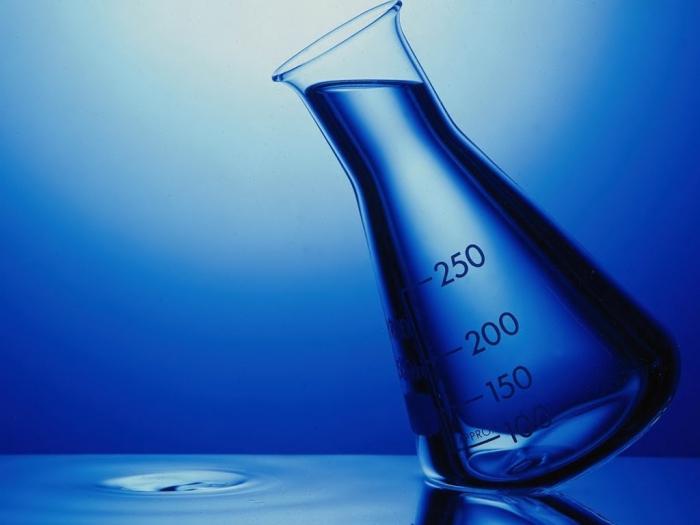 You can do it yourself or invite a specialist. If possible, it is better to take the sample to the laboratory immediately, the sooner you give it to specialists, the more reliable the result will be.
You can do it yourself or invite a specialist. If possible, it is better to take the sample to the laboratory immediately, the sooner you give it to specialists, the more reliable the result will be.
In summer cottages there is rarely a central water supply. As a rule, it is replaced by a traditional well or, at best, a well. And often summer residents say that the taste of water from a well cannot be compared with the liquid that flows in the pipes of the city water supply system. But even transparent pure water can become a source of danger if it is not checked in the sanitary and epidemiological station. Excess iron, heavy metals, nitrates ... But you never know what gets into the well mine through groundwater!
Video about laboratory water analysis
To make sure, it is necessary to do a water analysis from the well. You cannot carry out this procedure on your own, so you need to take the samples to the sanitary epidemiological service. Usually such analysis is done free of charge or for a nominal fee. But you will be sure that you are drinking a high-quality liquid that will not spoil the health of anyone in the family.
And if you find that there is cloudy water in the well, or some kind of foreign taste has appeared, then you must immediately fly to the sanitary and epidemiological station to find out the problem.
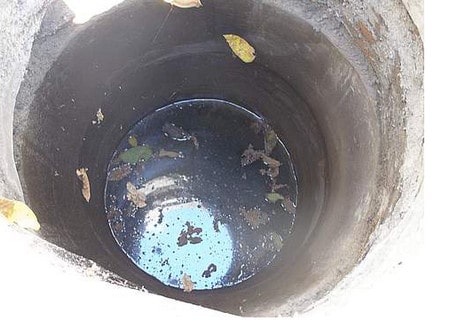
An open well shaft will instantly become clogged with leaves and debris applied from above.
How to take a water sample
To get the most accurate result, you need to take the sample correctly. It is good if you are sent to take the water intake again and explain how it is done. But more often you will simply get wrong data and will puzzle over how to “treat” this water, even if no “treatment” is required. To avoid this, follow these guidelines:
- The dishes into which you will pour water can be made of plastic or glass with a volume of not more than 1.5 liters.
- Bottles are not used for carbonated drinks, because there are residues on the inner walls chemical substances, which are not washed out, but may affect the outcome of the sample. But the container from under the mineral water - you can.
- If water is supplied to the house, and you will take a sample immediately from the pipes, then let the stream drain for about fifteen minutes so that the stagnant liquid and metal particles from the pipeline are washed out.
- Thoroughly wash the glassware that you plan to use for samples without using any formulations. Try to rinse the container that you will carry for analysis 2-3 times with water.
- When taking the liquid should flow into the bottle in a slow trickle. If you give a strong pressure, then along with water a lot of oxygen will get into the container, which causes unnecessary chemical reactions.
- The container is filled completely and tightly closed with a cork so that no air remains inside and cannot get in from the outside. Packed in a dark, light-proof bag.
- Try to take water for analysis immediately after sampling, within 3 hours. If this does not work, put the container in the refrigerator (not in freezer!). Keep in this form should be no more than 2 days.
Proper sampling will help to make the most accurate water analysis. After receiving the results, you can choose optimal system cleaning, suitable filters. It is worth repeating the analysis every two years if there was no construction nearby, no roads were laid, there are no nearby landfills or farms, factories. In the presence of such unsafe factors that can produce harmful effluents into groundwater, it is worthwhile to analyze well water more often.
Methods for self-analysis of quality
If there is no such laboratory in your area, or you simply do not have time to take samples there, then for the first time you can determine the quality of the water yourself, as they did in the old days. But remember: this measure is temporary. It is impossible to give an accurate assessment of the composition of the liquid using similar methods, so you still have to contact the sanitary and epidemiological station:
- If there is muddy water in the well, then an excess of sand and clay is to blame, particles of which lead to a similar effect. The second reason is the depressurization of the seams in the concrete rings, through which dirty groundwater passes into the well.
- Does the water taste metallic? It means that there is too much iron in it, which gives a specific taste and smell of metal. After standing, such water becomes cloudy. Laundry from washing will begin to turn yellow, and the enameled walls of dishes will deteriorate.
- Does the water smell like rotten eggs? This means that it contains too much hydrogen sulfide. Drinking such water is prohibited and urgently needs to be cleaned.
- Silty black deposits on well rings they say that hydrogen sulfide has been in your water for a long time, and its sulfur bacteria managed to develop violent activity, which led to organic accumulations, an excess of iron, manganese.
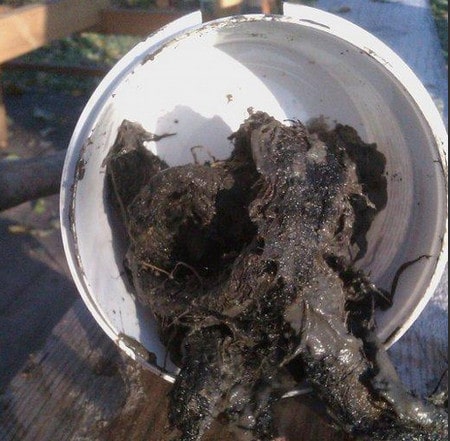
This is how silty layers look from the bottom of a long-uncleaned well, which lead to water pollution
How to clean water from a well with your own hands
Knowing how to clean the water in the well, you can fix problems at any time without calling expensive specialists.
Video idea: how to clean the well yourself
Getting rid of hydrogen sulfide
- The first step should be to pump water from the well.
- Then all inner surface well rings it is necessary to clean with brushes, scrapers from sediment, silt, mucus, layers.
- Treat the entire inner surface disinfectants(which include chlorine, active oxygen, etc.).
- Install a filter that will purify the water.
Removing iron from water
the best way removal of excess iron particles are recognized today as filters for water purification for a well. In water, iron can be dissolved in five different states (bivalent, colloidal, etc.), and often several of these compounds are present simultaneously. Filtration fights any iron compounds in the complex if an appropriate filter is purchased.
On sale you can find two options for filters: reagent and non-reagent. The former eliminate iron as a result chemical reaction which passes in the tank inside the filter. The latter purify the water by passing through the filter material. Both of them provide high-quality cleaning, but it must be borne in mind that any filter needs periodic restoration, cleansing of debris. For reagent ones, you will have to look for fresh chemical components to fill the tank, and reagentless ones should be cleaned by backwashing.
Turbid water: what to do
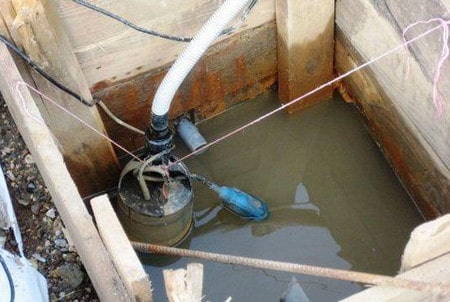
Turbid water is a signal that it is time to carry out cleaning activities
- For cleansing muddy water from particles of clay and sand, they buy a water filter from a well, which will carry out mechanical cleaning.
- If the turbidity is caused by the penetration of riding ground water(and this is easy to determine - the water becomes cloudy precisely after the rains), then it is necessary to carry out the following restoration work:
- pump out all the water;
- clean the walls from all deposits and dirt;
- disinfect;
- clean the bottom of trapped debris and silt;
- seal all seams through which water oozes with sealants;
- make a clay castle.
A clay castle is a trench that is dug around the well at the time of its creation. If this was missed, take care of the castle yourself. The depth of the trench is up to 2 m, the width is half a meter. It must be filled with clay so that the top of the clay layer has a slope from the walls of the well. Then surface water will not pass through the walls inward, and the clay will prevent them from seeping in the vicinity of the structure and penetrating into the seams between the rings.
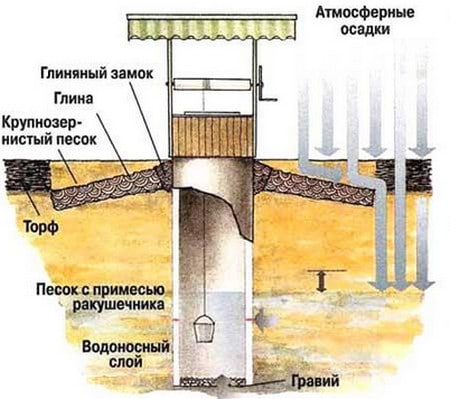
This is what the diagram looks like correct location clay castle around the well
Water purification from calcium and magnesium salts
Excessive rigidity caused by an excess of calcium and magnesium salts is harmful not only to the body, but also household appliances. A hard deposit that, over time, coats coils, discs, and other components of kettles, washing machines, and dishwashers, quickly disables equipment. Therefore, softening filters are installed in wells to soften hard water. The ion-exchange resin present in them accumulates an excess of salts, thereby improving the quality of water.
Getting rid of organic particles
The easiest cleaning method is carbon filtration. Coal is a natural adsorbent that perfectly absorbs organic matter dissolved in a liquid. Traditionally, birch charcoal acts as the main component of the filter. But in the latest developments the filler is made from coconut shells, because their adsorbing properties are four times higher than those of birch.
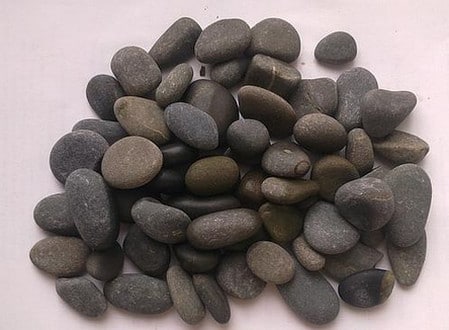
Silica gravel is an excellent bottom filter that retains not only organic matter, but also heavy metals
Water purification from bacteria
The most unsafe, but cheap way disinfect water - treat it with active chlorine. In this method, the correct dosage of the substance is important, because chlorine is an aggressive reagent that causes allergic reactions and lacrimation.
A more reliable option, but expensive - ultraviolet treatment. At the same time, no aggressive substances are poured into the water, and ultraviolet lamps capable of destroying not only microbes, but also spores of algae. Water purified in this way does not change its composition and does not acquire any additional flavors.
After the well has been thoroughly cleaned, you can safely take water samples and go to the laboratory. We think that now not a single sanitary doctor will forbid you to drink water from his well.
Water is both an invaluable and vital resource. If you have an individual source of water that is used by less than 21 people, then you are responsible for it and must be responsible for the quality. Here you will find complete information necessary for the fulfillment of these obligations.
How to check the quality of drinking water?
Regardless of the type of source and well, the water coming from the well must be good quality and meet all minimum requirements. Water can be transparent and clear to the light, not have a specific smell or taste, but at the same time contain elements harmful to health in the form of bacteria, viruses, protozoa or nitrates.
Water in underground sources is clean due to natural filtration
Groundwater, which is generally of higher quality than surface water (lakes, rivers, streams) due to the soil's natural filtering capacity, can be vulnerable to pollution, so regular water quality needs to be taken care of.
These tests must be carried out in an accredited laboratory. It is necessary to do them even if you have not noticed a deterioration in water quality. You also need to explore the well itself and the area nearby.
Microbiological indicators of water quality
Most of the pathogens (potentially pathogenic viruses, bacteria or protozoa) that can be found in water come from human and animal excreta. Reveal All dangerous substances technically impossible, but it is necessary to carry out the maximum number of tests for the most common pollutants.
The found E. coli directly indicates that human or animal fecal waste got into the water
Other pathogenic organisms may be present with it.
Water contaminated with faeces can cause gastroenteritis in humans. Although this disease often resolves without any complications, in some cases it can have serious consequences for human health.
Even dirty water from a well can infect a person with hepatitis and meningitis. These diseases can subsequently be transmitted from person to person. There are many people at risk at once.
Nitrates/nitrites
The main sources of nitrates/nitrites are agricultural fertilizers, manure, household wastewater, as well as the decomposition of plant and animal organisms. They enter groundwater through snow or rain mainly in spring and autumn.
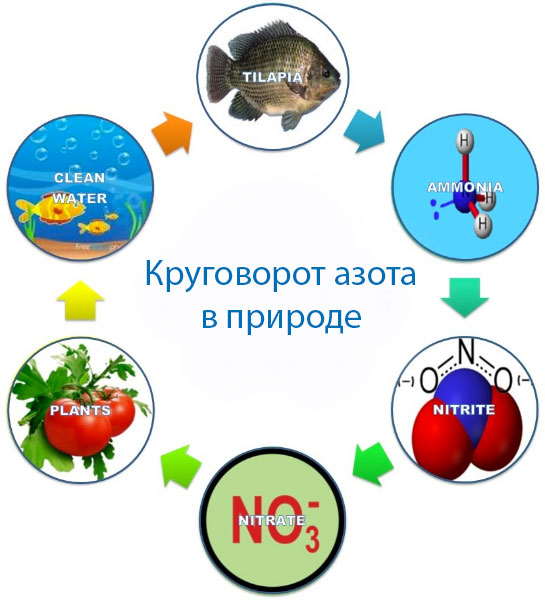
Control of the amount of nitrogenous compounds in water is necessary where the water source is close to production or farms
Presence of nitrates/nitrites in water:
More than 5 mg/l
A nitrate/nitrite concentration of more than 5 mg per liter indicates the impact of agricultural activity, and calls for testing this parameter at least twice a year, as the concentration may increase over time.
More than 10 mg/l
If the test revealed this concentration, then this water is prohibited for cooking, which is consumed by children or pregnant women. If possible, do not drink this water and all other people.
Presence of E. coli or enterococcal bacteria in the water
Drinking water should be free from any trace of E. coli or enterococcal bacteria. If in doubt, boil the water obtained from the well or buy bottled water. You also need to boil water for making ice cubes, food and drinks, and for brushing your teeth.
You can safely use well water for showering or bathing (but don't swallow the water if it gets in your mouth). Children in such water need to be washed only with a sponge.
Until this happens, the well must be disinfected. To do this, follow these steps:
1. Thoroughly clean the well, removing foreign objects (leaves, plants and other debris).
2. Pour the disinfectant solution into the well (see table below).
3. Wait 24 hours for all harmful microorganisms to die.
4. Open the faucet and drain the water until the foreign smell of chlorine disappears.
5. A week after disinfection, test the water for compliance with standards.
Determining the source of pollution
It is important to identify the source of pollution and take appropriate long-term maintenance of water quality. Cause dirty water can be:
Hazardous materials with damaged packaging;
Insufficient slope around the well;
Unsanitary premises.
In each of these cases, it is necessary to eliminate the cause of pollution by cleaning the area around the well.
Well water quality during a flood
During the period of floods, the owners of water sources are obliged to make efforts to protect them. These measures may include the following:
Closing wells before the water subsides and getting it from other suitable sources. If this is not possible, then the water from the well must be boiled for at least 1 minute;
When the big water is gone, you need to check the equipment of the well;
Let the well settle for 10 days, and then disinfect it (see the algorithm above);
After disinfection, the quality of the water must be checked again before it is used.
Amount of chlorine required for disinfection
This table will help you determine the amount of substances needed:
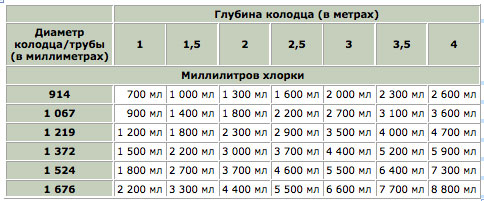
Amount of chlorine per volume of water for disinfection
It is very pleasant to drink and use pure natural water from a well or well located on suburban area. But sometimes the taste of water worsens, it becomes cloudy, dirty, the water appears bad smell. Yes, and for clear water from time to time it is required to check its quality.
How often should water quality be checked?
Despite the external good view water, it may contain various impurities and substances that adversely affect human health. Therefore, it is recommended to periodically, at least once a year, check the quality of drinking water. It is even better to perform such a procedure every six months, as this will allow you to assess the seasonal change in water quality in the well. Water quality testing is usually carried out in specialized laboratories.
When checking the quality of water, it is necessary to focus on the concentrations of substances and impurities in drinking water approved by the Ministry of Health of the Russian Federation and given in the Sanitary Norms and Rules.
These standards cover the following characteristics of drinking water:
- turbidity;
- chromaticity;
- alkalinity;
- rigidity;
- metal content;
- content of chlorides and other impurities.
Main signs and causes of water quality deterioration
The main signs of deterioration in the quality of water in the well, which can be determined visually, include: 
- the appearance of turbidity in the water;
- changing the color of the water. At the same time, black color indicates the presence of decomposition products of organic substances in the water, green color signals the reproduction of algae in the water when it enters the well sunlight, A yellow talking about high content iron in water;
- unpleasant taste and smell;
- the presence of clay plaque on the walls of the well;
- decrease in water level.
The reasons for the deterioration of the quality of water in the well are:
- formation of a lime layer. This layer reduces the amount of water entering the well;
- the appearance of gaps between concrete rings well. Through these cracks, melt water can enter the well and
- various harmful substances;
- rare use of the well. This leads to stagnation and rottenness of water;
- improper installation of the pump, which leads to silting of water;
- the destruction of the clay castle, which leads to melt water entering the well;
- foreign objects entering the water. For example, getting into the well of small rodents.
Well cleaning methods
Based on the results of water quality studies in the well, the well is cleaned, which includes the following steps:
- mechanical cleaning;
- biological treatment.
After the implementation of these stages of cleaning the well, it is recommended to install a comprehensive water filtration.
mechanical cleaning
Mechanical cleaning of the well involves cleaning the entire structure of the well from dirt and mucus. It is recommended to carry out such cleaning once every two years for wells used year-round, and once a year for wells that are operated irregularly (for example, only in holiday season).
When conducting mechanical cleaning the following tools and equipment are used:
- winch;
- a device for descending a person into a well;
- ladder;
- pump;
- bucket;
- cement mortar;
- trowel, metal brush.
Water treatment stages 
Carrying out mechanical, biological treatment of the well and the use of a bottom filter does not always guarantee full suitability for drinking water from the well. Therefore, depending on the composition of the water, it is necessary to use additional water filtration. In this case, it is possible to use both filtration from individual undesirable substances contained in water, and a complex filtration system that has several stages of water purification.
For example, to remove excess iron content in water, which adversely affects the cardiovascular system and human liver, reagent and non-reagent filters are used. To protect against an excess of magnesium and calcium in the water, which causes the deposition of salts in the body, filters with ion exchange resin are used. Water purification from organic substances is carried out by filters filled with coals from coconut shells, which are 4 times more effective than charcoal.
When using an integrated filtration approach, the water undergoes multi-stage purification, which makes it crystal clear.
In this case, the water goes through the following stages of purification:
- purification of water from particles of silt, clay, rust not dissolved in water. At this stage, mesh filters are used;
- purification of water from the impurities of iron, manganese and other elements dissolved in it. Impurities are oxidized and removed;
- clarification of water due to sedimentation of impurities. This process is carried out by the action of catalysts;
- final purification of water by coal filters. Water is purified from odor, turbidity and unwanted taste.
conclusions
During the operation of the well, it is necessary to periodically check the composition of the well water.
If a deterioration in water quality is detected, it is necessary to clean the well and disinfect the water.
To obtain water that meets sanitary standards, it is necessary to use complex filtration. This is very milestone creation .








